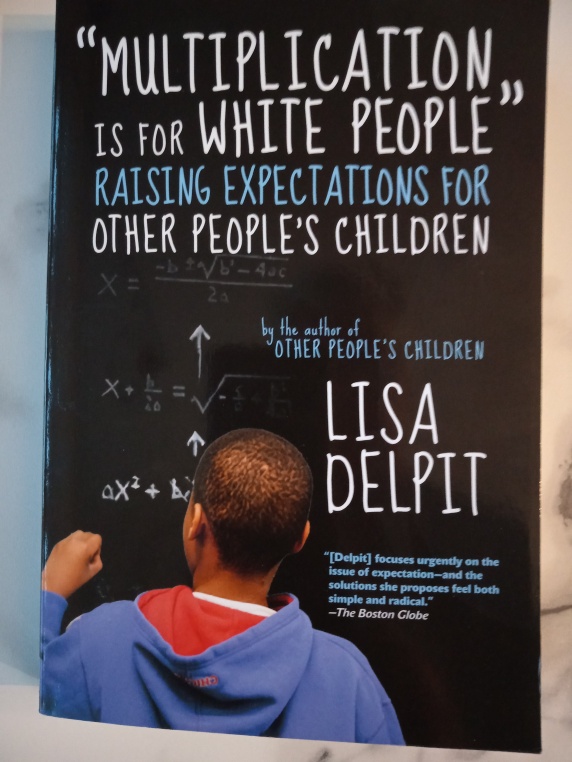It starts with mindset

In this second of my letters from Indiana I will share with you my developing thoughts about the interplay of teacher mindset and practice when it comes to teaching multilingual learners. I have not quite clarified what I think, so bear with me; better still, contact me and tell me what you think.
A key thread running through the heart of the approach to teaching that I am observing out here – The Enduring Principles of Learning – is that the teacher’s skill with designing and delivering intentionally dialogic activities must sit hand in hand with the desire to advocate for multilingual learners and children from diverse backgrounds.
My observations of teachers in Indianapolis schools have been in pandemic-affected classrooms where everyone (teacher and pupils) is masked, sometimes children are working solo rather than in the small groups conducive to dialogic practice, and there is District-level prescription in the curriculum that makes England’s National Curriculum for English look positively laid back. For example, the teaching of reading is done through a specific scheme which all schools in the District I am working with are directed to use, and for which the resources are entirely mapped out unit by unit. This scenario does not lend itself obviously to teaching which allows the pupils who are learning English to access the curriculum and grow their new language. And yet, and yet.
Observing a 5th grade teacher (age 10 – 11) I watched as he focussed forensically on the meaning of vocabulary in an excerpt from the story Winds of Hope by Katy Duffield which tells of a boy in Malawi who manages to build a windmill for his family farm. The learning objective was for the children to demonstrate their capacity to use context cues to identify unknown words. ‘Lexically this text is somewhat beyond their reading level’ he explained to me, but I observed as he scaffolded pupils’ understanding of the word irrigate. Having first modelled how to find clues in the text he set the groups off with a new set of words – junkyard, tower, 16 foot, cheered, prestigious, impoverished, windmill – and asked them to find them in the text, unpick their meanings, and discuss what these words suggested about the content of the story. He left the children to work in small groups and moved between tables checking in on their conversations. At the end of the discussion children were able verbally to put together sentences that described their thoughts about the story setting and potential plot sequence.
The lesson continued in similar vein with opportunities for talk being dressed differently but always as questions: ‘give me your best guess’, ‘ I keep coming up against this word dynamo -what does it mean to you?’. This meant that once the children moved on to independent work, reading and answering questions in their groups, they had a strong sense of what the story was about and were thus equipped to read with levels of comprehension heightened well beyond what they would have managed alone.
So what does this lesson observation have to do with mindset? Well, this teacher could have made a sequence of very different decisions in his classroom. He could have decided that children were not to work in groups, he could have given them all the questions on the worksheets supplied by the reading scheme and asked them to write the answers alone and in silence, he could have ignored the connections the story had with his pupils who live in a state with vast swathes of agricultural land. In other words, he could have run with the prescription. Instead, he took the prescription – the expected standard from the reading curriculum and the lesson directed for that week – and he enhanced its impact for the multilingual children, and the rest of the class, by ensuring that his approach to its delivery was dialogic. He did this because he knew that the text would be challenging for the children, but he was determined that they would both access and own it. I am not sure where mindset ends and practice begins in this observation, but I think it starts with his desire to give a voice to children who, to use Lisa Delpit’s words, ‘lack access to the culture of power’.
My observations of the 12 teachers I am working with are as varied as they would be were I observing 12 teachers at home. What they have in common are high quality relationships with their pupils which are tangibly respectful. Teachers address their classes as ‘my friends’ and many have spent the early part of this post-virtual teaching year building the foundations of collaborative group working that will support the talk-rich learning experiences that will in turn drive success in language and literacy development.
Such positive dispositions grow in no small way from the ways in which leadership teams in these schools work with their staff to prioritise conversations that challenge inequities during professional development meetings. Indeed, the District’s desire for prescription on the one hand is tempered by an explicit commitment to a social justice agenda. Specifically, their first Equity Goal is that schools will develop: “culturally sustaining practices that support an equitable learning environment.”

One leadership team – both women of colour – have introduced their staff to the book ‘Multiplication is for White People’ by Lisa Delpit. Their view is that the practical side of The Enduring Principles of Learning will only take root in their (mostly white) teachers if the teachers attend to the way that they think about their (mostly non-white) pupils first. What has really struck me in this book is Delpit’s blueprint for a pedagogy of liberation which clearly demonstrates the inextricable link between practice and mindset. She describes this pedagogy as stemming from:
‘….a consciously devised continuous programme that develops vocabulary in the context of real experiences, provides rigorous instruction, connects new information to the cultural frameworks that children bring to school, and assumes that the children are brilliant and capable.’
(From Multiplication is for White People, Lisa Delpit)
In essence this picture of the curriculum is what The Enduring Principles of Learning are all about, and the schools I am working with are first and foremost of the opinion that their children are brilliant and capable.
Amen to that.


